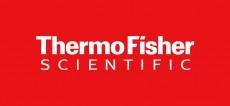North American fine chemicals market to reach $28.62bn in 2011
approvals and intense competition from Asian companies, a new
report from market research analysts Frost & Sullivan predicts
revenues in the North American fine chemicals sector will grow from
$21.29bn (€17.78bn) in 2005 to reach $28.62bn in 2011, driven by
the production restructuring announced by pharmaceutical majors.
The survey finds that the increasing focus of pharmaceutical companies on R&D as well as their reduced emphasis on captive manufacturing are pushing fine chemicals suppliers to offer products at lower costs and reduce marketing time, thus enabling pharma companies to concentrate on their core competencies and employ beneficial reorganisation processes.
It also suggests that in order to meet the growing requirements from the pharmaceutical companies, fine chemicals enterprises must opt for consolidation to attain a critical mass and decrease the prevalent degree of fragmentation.
As a result of this consolidation, it is likely that the fine chemicals market will grow inorganically, the report says.
Interestingly, fast growing high potent active pharmaceutical ingredients (HPAPI) and hazardous chemistry markets are emerging as viable profitable alternatives to pharmaceutical intermediaries.
What is more, the contract biopharma segment is about to witness strong growth as biopharmaceuticals are attracting greater venture capital (VC) funding.
Also, the currently undervalued pure play pharmaceutical intermediaries and active pharmaceutical ingredients (API) businesses offer the best opportunities for private equity participants to enter the market, the report finds.
Those companies that do not cater for niche markets will find it increasingly difficult to survive in the North American region due to a likely increase in outsourcing to the Asian countries as their units offer advantages in terms of cost, time to market, reliability, and quality.
India for example has over 70 factories compliant with current good manufacturing practices (cGMP) - the second largest in the world after the United States - while the prices offered by manufacturers in India and China are 50 per cent of those provided by companies in North America.
This is not surprising since the lower fixed labour and maintenance costs common in Asia translate to 10 per cent of the expenditure incurred by North American manufacturing plants.
Adding salt to the wound, the drop in the rate of new chemical entity (NCE) approvals curtails the profitability of fine chemicals companies.
"The growing number of suppliers from Asia, which offer goods at lesser prices than their North American counterparts and are compliant with current good manufacturing practices (cGMP) as well as intellectual property rights (IPR), are increasingly catering to multinational pharma enterprises," says Frost & Sullivan analyst Shrikanth Srinivasan.
"To stay competitive in this scenario, participants in the North American fine chemicals market are opting for restructuring, the outcome of which is likely to depend largely on production restructuring in pharmaceutical companies."
The report concludes that fine chemicals manufacturers supplying to North America must concentrate on niche technologies such as HPAPI to gain ground in the long run.
Emphasising on maintaining confidentiality, building a top-notch reputation and providing documentation and superior product quality while improving the speed of delivery, flexibility, product quality and price is the only way to gain advantage over Asian rivals and ensure a steady stream of revenue.








